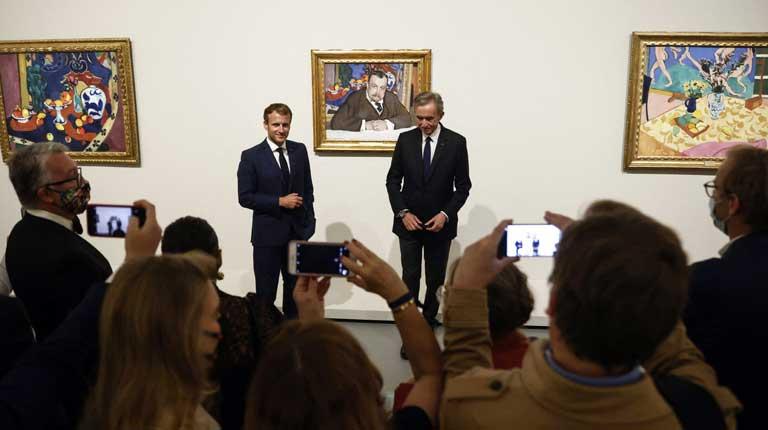This unique set has been exhibited since September 21 at the Vuitton Foundation in the Bois de Boulogne. It has already been seen by more than a million visitors. Since Thursday, social networks have been buzzing with calls for it to be seized.
Among the Russian properties that are practically easily “immobilized” is the Morozov collection, a treasure of modern art nationalized in 1918 by Lenin. Two hundred paintings of the highest quality, mainly from Saint Petersburg (Hermitage Museum) and Moscow (Pushkin Museum of Fine Arts and Tretyakov Gallery) but also from museums in Minsk (capital of Belarus), Dniepropetrovsk (Ukraine). And finally, for a small part, foundations created by Petr Olegovich Aven, Vladimir and Ekaterina Semenikhine, and Viatcheslav Moshe Kantor, all oligarchs.
This unique set has been exhibited since September 22 at the Vuitton Foundation in the Bois de Boulogne. It has already been seen by more than a million visitors. Since Thursday, social networks have been buzzing with calls for him to be seized. Some even imagine pledging it to support the humanitarian effort, or even to buy weapons useful to the Ukrainian resistance.
What future then for these gems of Impressionism, for these Gauguins, Van Goghs, these Nabis, these Matisses and Picassos, who are also shown with Russian paintings of equally inestimable value, signed Répine, Larionov, Gontcharova, Konchalovsky or even Malevich the great pioneer of abstraction?
“According to the law in force since August 10, 1994, the French State cannot sequester these paintings, pastels and sculptures because they are the responsibility of foreign public institutions”, explains lawyer Olivier de Baecque, specialist in art law. As is the case for any major borrowing of works from outside, an order of exemption from seizure was issued on February 19, 2021 by the Minister for Europe and Foreign Affairs and the Minister for Culture.
Then, as the exhibition which was scheduled until February 22, 2022 was extended, an additional decree extended this system as can be read in the Official Journal. Legally, therefore, the collection is untouchable until April 6 inclusive, the day the loan contract expires. But then ? No one knows.
Different seizure rights depending on the country
In 2005, 54 oils from the Pushkin Museum collections presented to the Pierre Gianadda Foundation in Martigny, Switzerland, were blocked at customs in Basel and Geneva as part of a financial dispute. Finally, the Federal Council had re-read international law and realized that it prohibits the seizure of any national cultural property.
Not all countries fall within this framework. “The United States for example”, notes Olivier de Baecque. Or the UK. When in 2008 the exhibition From Russia: masterpieces of French and Russian painting from the years 1870-1925 was going to come to the Royal Academy in London, Vladimir Putin had demanded, and obtained, that the British parliament prohibit any legal action during the stay of the paintings.
In France, a presumed fake Cranach belonging to the princely family of Liechtenstein had been seized by the judge of the financial center Aude Buresy who works in particular to dismantle counterfeiting networks. Confiscated for several months, it was recently returned for lack of evidence.
Advisor to the CEO of LVMH Bernard Arnault, Jean-Paul Claverie, comments on the situation. “At the time of writing, I haven’t received any calls from the Russian embassy or museums. I remind you that our responsibility is the protection of works. We will therefore ensure, as agreed, their return to their museum. If the conditions for them to travel safely turn out to be insufficient, we will wait”, he explains.
In 2016, by bringing in the Chtchoukine collection – broadly comparable to the Morozov collection – a partnership was signed, illustrating “the strength of the bonds of friendship and collaboration which have always united French and Russian institutions”. This materialized in the lending museums by financing study programs, improving the preservation of works and even the construction of a restoration workshop. This large-scale cultural action, targeting outstanding works of humanity, will be completed when each treasure has returned to its room. For news, again, no one knows.
